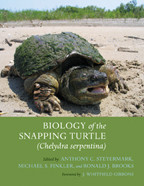
Reviews
[Kaczensky and Ransom] will not only stimulate interest in this often forgotten but important group of ungulates, but also provide a basis for new ideas and protection concepts.
The depth and breadth of analysis of established knowledge in the field is unrivalled elsewhere, and this publication is recommended highly as a starting point for wildlife biologists, policy makers, behavioral ecologists, and anyone involved in equid management.
Horses, in one form or another, have been roaming our planet at will for at least 56 million years, but today many of the free-roaming populations are in danger of disappearing. Now for the first time ever we have, in Ransom and Kaczensky's much-needed Wild Equids, a comprehensive assessment of the world's wild equines, including feral horses, zebras, asses, onagers and Przewalski's horses. Horses deserve a better deal – a deal that needs to be based on science – and this volume, years in the making, is an important step in making that happen.
The editors of this book have done a masterful job assembling a comprehensive review of scientific research on equid behavior. This is essential reading for wildlife biologists, conservation specialists, and policymakers in equid management. The chapters, including one on the meaning of wild, display a tremendous range of knowledge.
People have interacted with equids for thousands of years, and domesticated horses and donkeys are very familiar parts of our lives. Yet most of the original wild equid species are highly threatened or even extinct. Wild Equids is the most comprehensive summary of all that we know about these remarkable animals: wild asses, wild horses and zebras. Anyone who has a serious interest in these species needs to start with this book.
Finally, a book that synthesizes a vast array of information on horses, zebras and asses. Ransom and Kaczensky have brought the experts together to pool their knowledge and summarize what we know about the phylogeny, social behavior, ecology, and conservation needs of these species. This book is critical step in recovering populations, species, and the ecological function they provide, of this important Family of ungulates.
Equids and humans share thousands of years of common and very special history. Today, however, 5 out of 7 species are assessed as threatened with extinction and yet basics of behaviour and ecology of wild species remain unknown. It was, therefore, high time for this compilation of cutting-edge science with a focus on ecology, management and conservation.
A world-class roster of authors provides a comprehensive treatment of diverse subject matter that is deep, thorough, and yet extremely accessible to diverse audiences. In an era when humankind’s actions are the major drivers of environmental change, the creation and sharing of the new knowledge presented in this volume will be essential to any chance we have of ensuring that wild equids will persist in nature for future generations to come.
Book Details
1. Equus: An Ancient Genus Surviving the Modern World
2. Social Organization of Wild Equids
3. Behavior of Horses, Zebras, and Asses
4. Habitat and Diet of Equids
5. Equids and Ecological Niches
1. Equus: An Ancient Genus Surviving the Modern World
2. Social Organization of Wild Equids
3. Behavior of Horses, Zebras, and Asses
4. Habitat and Diet of Equids
5. Equids and Ecological Niches: Behavioral and Life History: Variations on a Common Theme
6. Wild and Feral Equid Population Dynamics
7. Genetics and Paleogenetics of Equids
8. The Roles of Humans in Horse Distribution through Time
9. Human Dimensions of Wild Equid Management: Exploring the Meanings of "Wild"
10. Management of Free-Roaming Horses
11. Wild Equid Captive Breeding and Management
12. Status and Conservation of Threatened Equids
13. Challenges and Opportunities for Conserving Equid Migrations
14. Reintroduction of Wild Equids
Epilogue





